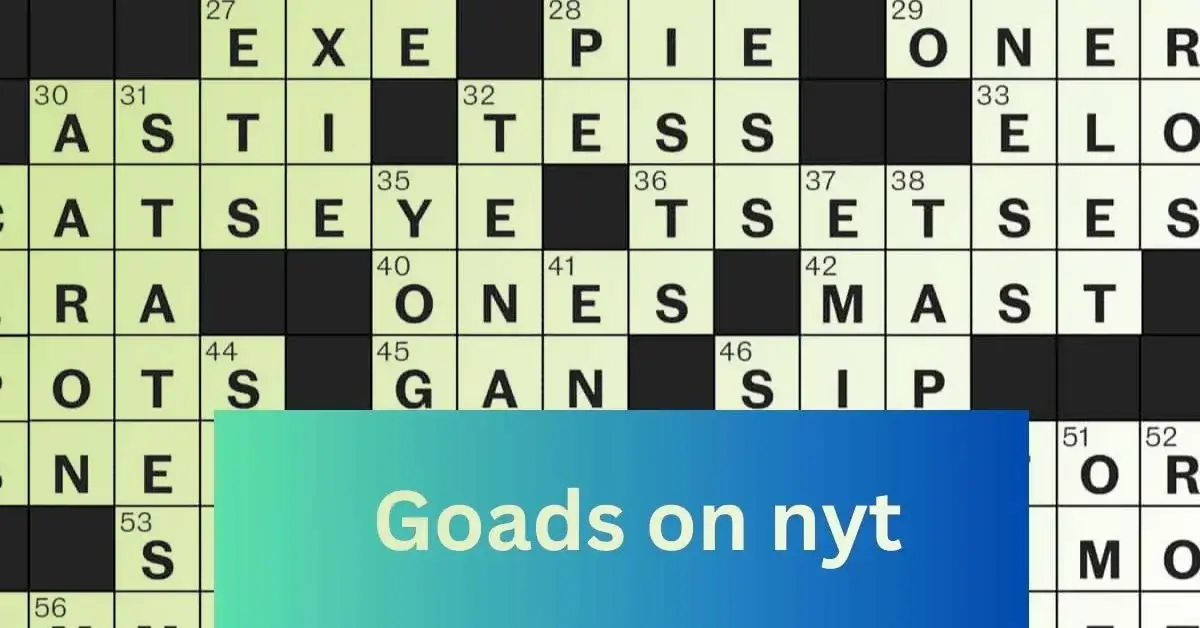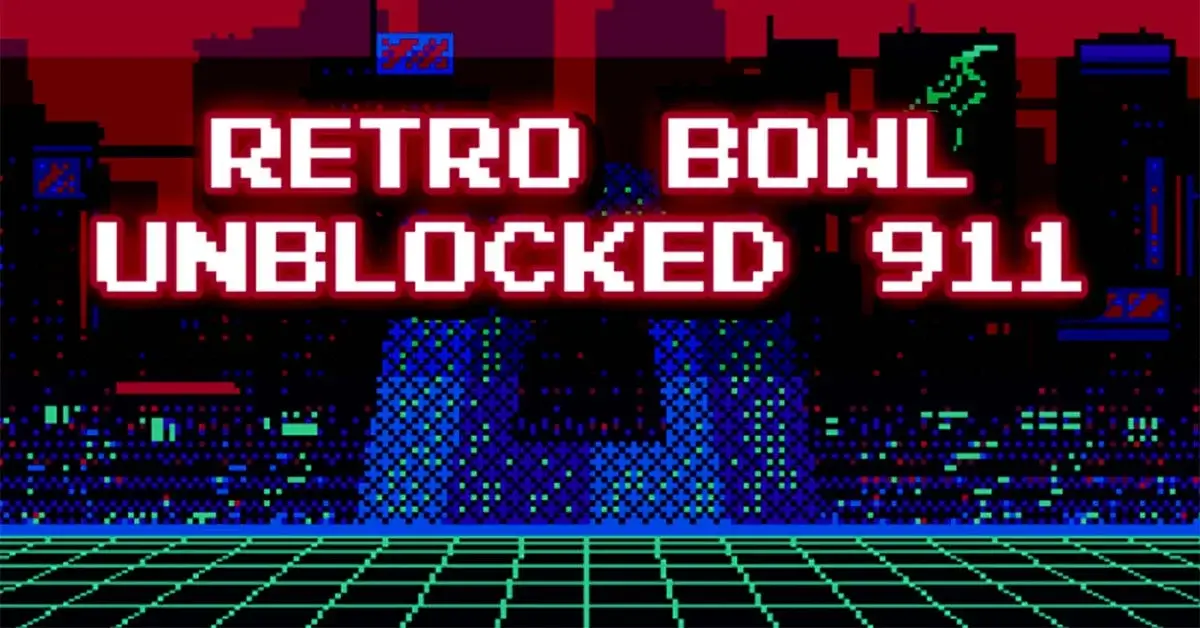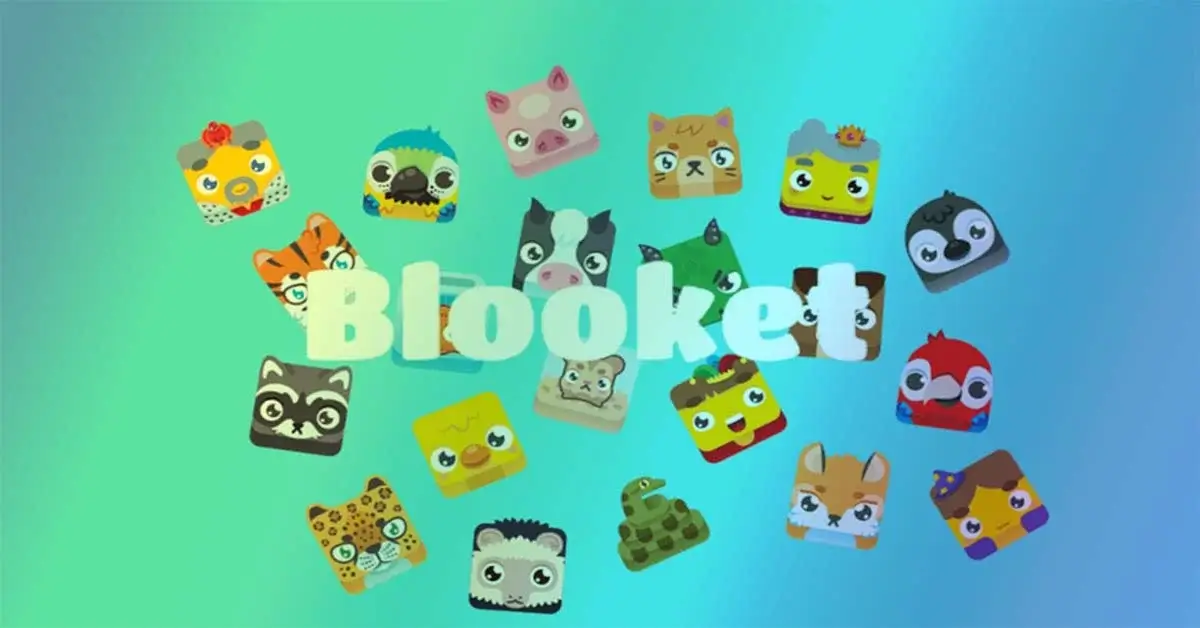If you’re a regular reader of the New York Times, you might have come across terms like “goad” in some articles and wondered what they mean. Well, goads are essentially prompts that journalists use during interviews to get more details or guide the conversation in a specific direction. The NYT uses these prompts strategically in their reporting to extract important information from sources or gain extra insights into complicated subjects. Being able to recognize goads on NYT as a reader helps you grasp the flow and context of these interviews better.
What Do Goads on NYT Mean?
Goads, those concise comments nestled at the conclusion of New York Times articles, serve as a dynamic platform for readers to swiftly react to and deliberate upon the content. First introduced in 2018, Goads have been strategically crafted to not only promote community engagement but also to kindle thoughtful digital conversations around the comprehensive journalistic endeavors of the Times.
For readers, exploring all the Goads associated with a particular article is as straightforward as scrolling down to the bottom of the page. The Times, with a discerning eye, curates a selection of the most perceptive and representative Goads, prominently featuring them at the top. What adds an interactive twist is the opportunity for readers to cast their votes, essentially endorsing the Goads they find most valuable. This democratic approach allows the cream of the comment crop to rise to the top.
To actively participate in this digital dialogue, readers are invited to contribute their own Goads by selecting the ‘Add a Goad’ option located at the conclusion of an article. The process is uncomplicated – a prompt guides users to articulate their thoughts within a concise 140-character limit. It is emphasized that Goads should be more than just comments; they should be thoughtful contributions that engage with and build upon the ideas presented in the article. Importantly, personal attacks, spam, and off-topic comments find no place in this space.
Prior to being made visible on the site, all Goads undergo meticulous scrutiny by The Times, ensuring adherence to community standards of civility and relevance. Any Goad falling short of these standards is excluded from publication. The overarching goal is to elevate the quality of online discourse, and The Times envisions Goads as an instrumental venue for readers across the globe to connect and delve into discussions surrounding the critical issues shaping our world.
Participation in the Goads program is not restricted; it is open to all. Therefore, the next time you find yourself concluding an enlightening Times article, seize the opportunity to share your perspective through a Goad. In doing so, you may very well catalyze an engaging digital dialogue, contributing to a deeper and clearer understanding of the most pressing topics of our time.
Unveiling the Origins: The First Crossword Puzzle (1913-1942)
To truly grasp the essence of the New York Times crossword, delving into its rich history is essential. The crossword phenomenon began in 1913 when the New York World newspaper first published a crossword puzzle. This ignited a crossword craze, eventually prompting the New York Times to introduce its own crossword in 1942. Crafted by Margaret Farrar, the inaugural NYT crossword set the stage for the classic style we recognize today: a symmetrical 15×15 grid featuring clever and literary clues, designed to be solved by educated and culturally literate enthusiasts.
Evolution in the Midst: The Next Generation (1950s-1960s)
As crosswords became a mainstream sensation, the NYT crossword underwent transformations. In the 1950s and 60s, under the editorial guidance of Eugene T. Maleska, puzzles took on a pithy, reference-heavy character. The grid itself expanded in the late 60s, stretching to 17×17 and then 19×19, accommodating more ambitious themes and incorporating colloquial language.
Navigating the Contemporary Landscape: The Modern Era (1993-Present)
Under the stewardship of Will Shortz, who assumed the role of editor in 1993, the NYT crossword entered a new era. Emphasizing cleverness, whimsy, and inclusiveness, the puzzles took on a distinctly modern flavor. The Sunday puzzle, with its expansive 21×21 grid, introduced wide-ranging vocabulary, popular culture references, and even visual elements. Midweek puzzles, carefully calibrated for difficulty, cater to both novice and seasoned solvers.
A Timeless Standard: The NYT Crossword Today
Despite the evolution over the years, the New York Times crossword remains the gold standard in the world of puzzles. It boasts a history steeped in tradition, consistent quality, and an enduring appeal. For wordplay and vocabulary enthusiasts, tackling a NYT crossword is a joyful experience. With each puzzle, whether you’re a beginner or an expert, there’s an opportunity to both solve and learn.
Decoding Tricky Strategies in NYT Crosswords
The New York Times crossword is renowned for its knack for throwing off solvers with clever misdirects and tricky “goads.” Let’s explore a few common examples of these head-scratching maneuvers found in NYT crosswords:
Vague Clues: The Art of Misdirection
Prepare yourself for intentionally vague or misleading clues. Take, for instance, “Sticky stuff,” which might lead you to think of glue, gum, or tree sap. Similarly, “Bird feature” could be a beak, feather, or nest. These clues aim to mislead solvers into assuming one answer while the actual solution lies in less obvious possibilities. Keep an eye on the number of letters in the answer and consider less apparent options.
Tricks with Punctuation: Navigating the Punctuation Maze
Beware of clues playing games with punctuation. Sometimes, writers omit quotation marks, commas, or dashes to intentionally sow confusion. For instance, “Chew noisily” wants the answer “chomp,” not “chew.” “Capital of Montana” is directing you to the city Helena, not the entire state. Stay sharp for these punctuation tricks.
Plays on Words: Embracing the Wordplay
The NYT crossword loves clues that incorporate puns, anagrams, reversals, or other wordplay. “Stadium level” might slyly refer to a tier, “Tennis great” could be Navratilova spelled backward, and “Oaters” hints at Westerns. Look for meanings that go beyond the straightforward or literal interpretation.
Misused Prepositions: The Preposition Puzzles
Watch out for prepositions like “to,” “for,” “with,” or “at” being used misleadingly in clues. “Roosevelt with a violin” wants the answer “fiddle”; “Name for a dog” is the word “Fido”; “Used for driving” refers to the word “tee.” Pay close attention to how prepositions are utilized in clues.
By staying vigilant to these common goads and tricks, you’ll enhance your skills at conquering even the trickiest NYT crosswords. With consistent practice, you’ll find yourself solving them with ease in no time!
Cracking the Code: Strategies for Tackling Goad Clues
When it comes to solving the tricky word puzzles known as “goads” in The New York Times Sunday edition, a bit of strategy and logical thinking goes a long way. These clues are designed to lead you to the solution in a roundabout manner, so it’s crucial to think critically about the wordplay and subtle hints. Here are some user-friendly strategies to help you unravel the mystery:
Unpack the Wordplay: Delving into Common Techniques
Carefully dissect the clue for various types of wordplay, with homophones being quite common. These are words that sound alike but have different spellings and meanings. For example, a clue featuring “write” could actually be hinting at “right.” Look out for anagrams too, where scrambled letters form a real word or phrase. Seek out small words hidden within larger ones. Double meanings are also frequent, involving a single word or phrase with two interpretations – one straightforward and the other idiomatic.
Seek Semantic Connections: Unraveling the Web of Meaning
Explore the semantic connections within the clue. Consider how words, phrases, or concepts might be related. Think about synonyms, antonyms, categories, rhymes, and allusions. These connections will guide you towards the solution.
Break it Down: Analyzing Word by Word
Take the clue apart word by word. Examine each word individually for alternate meanings or ways it could operate within the clue. Sometimes, a single word holds the key to solving the entire goad.
Guess & Check: A Trial-and-Error Approach
Once you have some possibilities based on the strategies above, take a guess and check if it fits the clue. Keep in mind that some goads may have more than one valid solution, so don’t hesitate to make multiple attempts.
Use Reference Materials: Tapping into Resources
Reference materials like dictionaries, thesauruses, and almanacs can be invaluable for deciphering goads. Look up word origins, obsolete words, proper nouns, and more. The solution might be hiding in the depths of archaic or obscure language.
With consistent practice, these strategies will become second nature. Solving goads may be challenging, but it’s a rewarding mental exercise that brings a sense of accomplishment. Stick with it, and over time, your success rate is bound to improve. Happy solving!
The Future of Goads in the NYT Crossword
The New York Times crossword has been tossing in those clever “goad” clues and answers for ages, tracing its roots back through the decades. However, when it comes to the future of goads in the NYT crossword, things seem a bit uncertain.
As crossword creators aim for clues and answers that feel fresh and in tune with the times, there’s a chance that goads might not take center stage. References to things like cattle prods and farming gear might seem a bit outdated to today’s solvers. While goads could still pop up in those tricky puzzles towards the end of the week, they might not be as common in the easier ones that cater to more laid-back solvers.
But, hold on! Goads have this timeless charm for a certain group of solvers. They bring a touch of nostalgia, connecting solvers to the puzzle’s early days and a bit of Americana. For these folks, goads are like a delightful puzzle within a puzzle, demanding some brainpower to figure out cryptic or punny clues.
A Touch of Specialized Knowledge
Goads also tap into a kind of niche knowledge that dedicated solvers pick up over the years. If you get what a goad is nudging at, it’s like a little badge that shows off your wide-ranging vocabulary, your familiarity with crossword traditions, and your knack for figuring out meanings from just a few hints. That’s why it’s a good bet that goads will stick around, showing up in those challenging late-week and specialty puzzles that are designed for the most die-hard solvers.
In a nutshell, while the future of goads in the NYT crossword might be a bit up in the air, they’re probably not disappearing anytime soon. However, where and how often they show up might change to cater more to those super enthusiastic solvers who still get a kick out of their sneakiness and the warm glow of nostalgia. For those just looking to enjoy a crossword casually, you might see fewer goads in favor of more modern and accessible clues. It’s all about finding that sweet spot between the new and the niche to keep all kinds of solvers satisfied. And in this balancing act, goads are one nifty trick up the crossword’s sleeve.
Conclusion
In simple terms, the article discusses “goads” in the New York Times (NYT) context. Goads are prompts or comments strategically used by journalists during interviews to extract more information. In the NYT, readers can engage in digital discussions through goads, with the option to vote for the most valuable ones. The article also explores the history and evolution of the NYT crossword, highlighting strategies for solving tricky clues. Looking ahead, the future of goads in NYT crosswords is uncertain, but they might persist in challenging puzzles, offering a touch of nostalgia and showcasing specialized knowledge among dedicated solvers. Overall, the article encourages readers to participate in this unique digital dialogue on the NYT platform.



